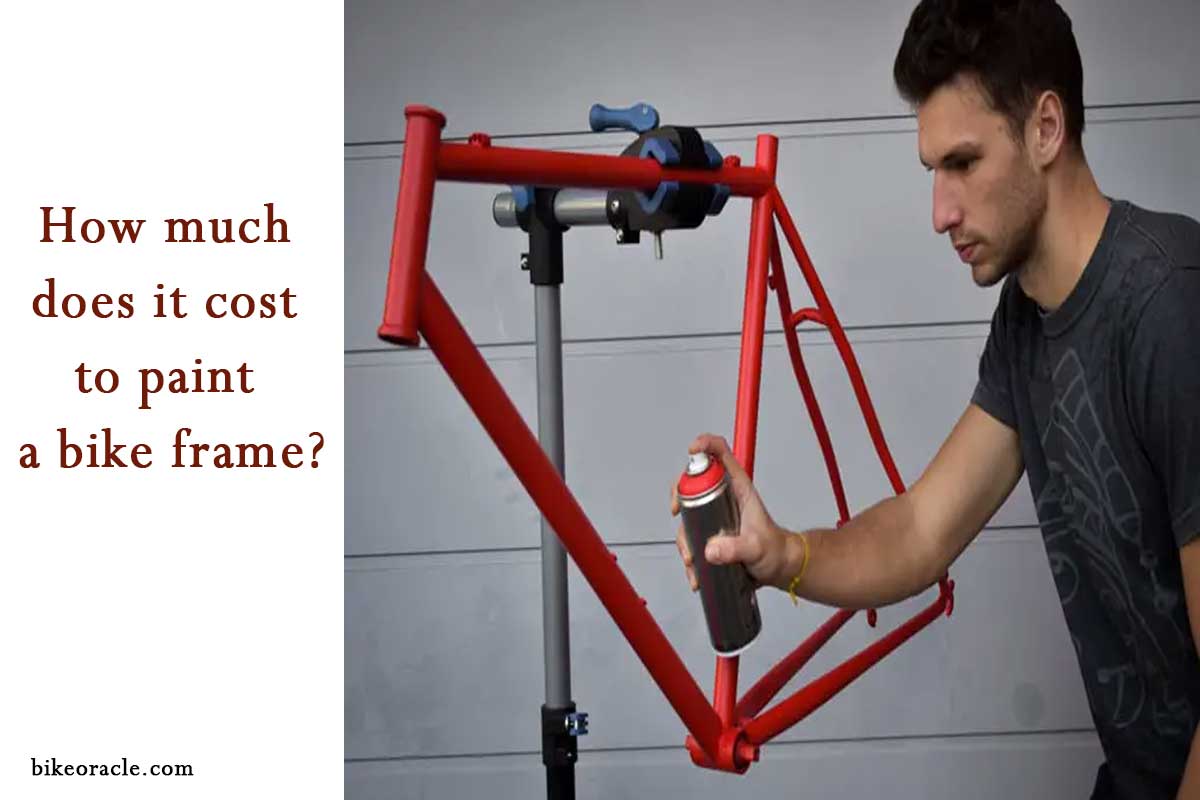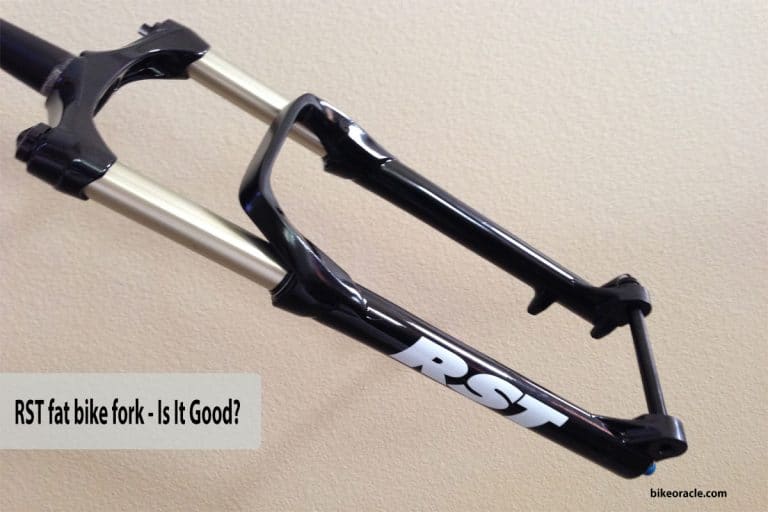How much does it cost to paint a bike frame – [Answered]

Customizing a bike often involves painting the frame, a popular choice among cycling enthusiasts. It lets riders showcase their personal style and create a distinctive look for their bikes.
That’s why many people want to know how much does it cost to paint a bike frame? Let’s discuss the answer in detail!
Factors to consider when painting a bike frame
Before embarking on a bike frame painting project, it’s crucial to consider several factors. These include assessing the condition of the frame, choosing the right paint type and color, gathering the necessary tools and materials, and setting up a suitable workspace. Additionally, understanding the cost factors associated with bike frame painting is essential for effective budgeting and decision-making.
A. Type of paint
The choice of paint has a direct impact on the cost of painting a bike frame. Different types of paint, such as powder coating, liquid paint, or automotive paint, come with different price ranges. Powder coating, known for its durability, may be pricier than other options.
B. Type of bike frame
The material and condition of the bike frame can also influence the cost. Frames made of steel, aluminum, titanium, or carbon fiber may require different preparation techniques and specific types of paint. Frames with extensive damage or intricate designs might involve additional work, increasing the overall cost.
C. Type of finish
The desired finish or design can affect the cost as well. Complex designs, multiple colors, or special effects like fades, metallic finishes, or custom decals may require more time and expertise, leading to higher labor costs.
D. Type of painter
The experience and reputation of the painter can impact the cost. Established and highly skilled painters may charge higher rates due to their expertise and craftsmanship. On the other hand, less established painters or DIY enthusiasts may offer more affordable options.
Preparing for Bike Frame Painting
A. Assessing the condition of the bike frame
Before painting a bike frame, it’s important to assess its condition. Inspect for any damage, rust, or imperfections that need to be addressed before proceeding with the painting process. Repairing and prepping the frame properly will ensure a smooth and long-lasting paint job.
B. Choosing the right paint type and color
Selecting the appropriate paint type is crucial for achieving a durable and visually appealing finish. Factors such as the frame material, desired level of customization, and environmental conditions should be considered when choosing paint. Additionally, selecting the right color that complements the bike’s overall aesthetics is key.
C. Gathering the necessary tools and materials
To paint a bike frame properly, gather tools like sandpaper, masking tape, primer, paint, clear coat, and brushes/spray guns. Having all supplies ready beforehand ensures a smooth and efficient painting process.
D. Setting up a suitable workspace
Creating an appropriate workspace is essential for a successful bike frame painting project.
For the best results, it is recommended to paint in a well-lit area, preferably indoors or in a protected outdoor space. Creating a dedicated workspace will help minimize dust and debris, resulting in a cleaner and professional paint job.
Cost Factors to Consider
A. Size and complexity of the bike frame
The size and complexity of the bike frame play a significant role in determining the overall cost of painting. Larger frames or frames with intricate designs may require more paint and labor, resulting in higher costs.
B. Quality of paint and primer
To achieve a long-lasting and attractive finish, it’s essential to invest in top-notch paint and primer. It will provide superior coverage, color retention, and resistance against chipping and fading.
C. Labor costs and professional services
If you decide to hire a professional painter, labor costs will be a significant factor in the overall expenses. Labor costs can vary depending on the painter’s expertise, reputation, and location. Obtaining quotes from different painters and comparing their services and prices will help you make an informed decision.
D. Additional customization or artwork
Customization options such as intricate designs, custom artwork, or specialized finishes can significantly impact the cost of painting a bike frame. The more complex the customization, the higher the labor and material costs are likely to be.
E. Shipping and transportation expenses
If you choose to send your bike frame to a professional painting service, you’ll need to factor in shipping or transportation costs. The distance and shipping method will affect the overall expenses. It’s important to consider these costs when budgeting for your bike frame painting project.
How To Paint A bike frame: Step-by-step Guide
Follow this step-by-step guide to paint a bike frame successfully.
1. Removing components and preparing the frame
Prior to painting, it is essential to disassemble the bike frame by removing all components like the wheels, chain, pedals, handlebars etc. Make sure to clean the frame to eliminate any dirt, grease, or old paint.
2. Sanding and cleaning the frame surface
Prepare the frame surface by using sandpaper or a sanding block to eliminate paint, rust, and imperfections. Then, use a degreaser to clean the frame thoroughly, ensuring optimal adhesion for the new paint.
3. Applying primer and allowing it to dry
Before proceeding, it is a must to apply a suitable primer to the frame, as per color manufacturer’s instructions. This will ensure a smooth and even surface for the paint to stick to. Allow the primer to dry completely before proceeding to paint the frame.
4. Applying the paint in thin, even coats
When painting the frame, use brushes or spray guns based on your preference and the paint type. Apply thin, even coats and let each coat dry before applying the next. You may need multiple coats for the desired color and coverage.
5. Applying a clear coat for protection and shine
Once the paint has dried, apply a clear coating to protect the paint and provide a glossy or matt finish. The clear coat enhances the durability and appearance of the painted frame.
6. Reassembling the bike components
After the paint and clear coat have fully cured, reassemble the bike components, ensuring everything is properly aligned and tightened. Take care not to scratch or damage the freshly painted surface during reassembly.
Professional Bike Frame Painting Services
A. Benefits of hiring a professional painter
While DIY painting can be a rewarding experience, professional bike frame painting services offer several benefits. Professional painters possess the necessary expertise, experience, and specialized equipment to provide superior painting finishes. They can provide valuable guidance on color selection, design choices, and the most suitable painting techniques tailored to your bike frame’s requirements.
B. Finding reputable bike frame painting services
To find reputable bike frame painting services, consider asking for recommendations from fellow cyclists or searching online for reviews and testimonials. Look for painters with experience in bike frame painting and a proven track record of delivering excellent results.
C. Comparing quotes and services offered
To secure the best value for your money when hiring professional painters, it is crucial to gather quotes from multiple sources. Compare services offered, such as paint type, customization options, and turnaround time, to make an informed decision.
D. Tips for communicating your design preferences
When working with a professional painter, clear communication is key to achieving your desired design. Provide reference images, color swatches, and detailed instructions to ensure the painter understands your vision. Regular communication throughout the process will help address any concerns or adjustments needed.
How Much Does It Cost To Paint Bike Frame: Average Cost Estimates
Cost range for DIY bike frame painting
When it comes to DIY bike frame painting, the costs can vary based on frame size, paint quality, materials, and customization. As a general estimate, allocating approximately $100 to $300 for tools, materials, and paint should give you a starting point.
Cost of tools and materials
The price of tools and materials for painting can vary from $50 to $150. This covers items like sandpaper, masking tape, primer, paint, clear coat, brushes, or spray guns, depending on the chosen quality and brands.
Estimated cost per can of paint
When it comes to paint, prices can vary from $15 to $40 per gallon. On an average you can paint at least 10 frames per gallon.
Additional costs for primer, clear coat, etc.
Additional materials such as primer, clear coat, and masking tape will contribute to the overall expenses. Budgeting an additional $20 to $50 for these items should be sufficient.
B. Average cost of professional bike frame painting
Professional bike frame painting services can vary in price depending on factors such as the complexity of the design, customization, and the reputation of the painter. As a general range, professional bike frame painting costs can start from $200 and go up to $800 or more, depending on the specific requirements and additional services.
Factors influencing professional service pricing
The complexity of the design, customization requests, special finishes, and the reputation and expertise of the painter can all affect the cost of professional bike frame painting. Custom artwork or intricate designs will generally incur higher costs.
Examples of pricing from different providers
The pricing from different professional bike frame painting services can vary significantly. Quotes can range from $200 for a basic single-color paint job to $800 or more for elaborate custom designs or specialized finishes. Requesting detailed quotes from multiple providers will help you compare pricing and services offered.
Factors Affecting Cost Variation
A. Geographic location and local market trends
The pricing for bike frame painting can vary based on your location and market trends. Costs tend to be higher in areas with a higher cost of living or greater demand for professional painting services.
B. Bike frame material and condition
The material and condition of the bike frame can affect the cost of painting. Frames made of materials such as steel, aluminum, titanium, or carbon fiber may require different preparation techniques and specific types of paint, which can impact the overall cost.
C. Complexity of the design or custom artwork
Custom artwork or complex designs will generally increase the cost of bike frame painting. Intricate patterns, multiple colors, or specialized finishes require more time and expertise, resulting in higher labor costs.
D. Additional services and special requests
Additional services such as frame repairs, frame alignment, or component upgrades may incur extra costs. Special requests, such as custom decals or logos, can also increase the overall expense. It’s important to discuss any additional services or special requests with the painter and obtain detailed cost estimates.
How To Minimize Bike Frame Painting Expenses: Tips for Cost Savings
A. DIY cost-saving tips and tricks
To save money, consider DIY painting if you have the skills and confidence. Research painting techniques, watch tutorials, and gather advice from experienced DIY painters. Buying tools and materials in bulk or opting for more affordable brands can also help reduce costs.
B. Negotiating prices with professional painters
When working with professional painters, don’t be afraid to negotiate prices. Request quotes from multiple providers and compare their services and pricing. Some painters may be willing to offer discounts or package deals for multiple frames or additional services.
C. Choosing simpler designs for lower costs
Elaborate designs and complex custom artwork can significantly increase the cost of painting a bike frame. Choosing simpler designs, single colors, or classic finishes can help keep the cost down while still achieving an attractive and personalized look.
D. Exploring alternative painting options
If the price of professional painting services doesn’t fit your budget, you might want to explore alternatives like vinyl wraps or DIY frame decals. They offer a more affordable way to transform the appearance of your bike frame without the hefty cost of a complete paint job.
Common Mistakes to Avoid While Painting Bike Frame
A. Skipping proper surface preparation
One common mistake is neglecting proper surface preparation. Failing to remove old paint, rust, or imperfections can lead to poor adhesion and premature paint failure. Take the time to thoroughly sand, clean, and prime the frame before painting.
B. Overlooking quality paint and materials
Don’t settle for low-quality paint and materials. They’ll leave you with a lackluster finish that easily chips, fades, and peels. Instead, opt for high-quality paint, primer, and clear coat for a long-lasting and polished result.
C. Rushing the painting process
Patience is key when painting a bike frame. To achieve a smooth and flawless finish, it’s crucial not to rush the painting process. Follow the manufacturer’s instructions and allow sufficient drying time between coats. This will prevent bumps and imperfections in the final result.
D. Ignoring safety precautions
When it comes to painting, prioritizing safety is crucial. Wear gloves, goggles, and a mask to shield yourself from paint fumes and potential harm. Additionally, work in a well-ventilated area to ensure proper air circulation.
E. Not Following professional guidelines
If you decide to work with a professional painter, make sure to explain your expectations and tell to follow the guidelines provided. Failure to follow the guidelines or their recommendations may compromise the quality of the paint job.
Frequently Asked Questions (FAQs)
Can I paint a bike frame without disassembling it?
Disassembling the bike frame is highly recommended for a flawless paint job. By removing components, you’ll have better access to all areas, resulting in a professional finish. So, embrace the challenge, disassemble, and let your artistic vision shine.
Can I repaint a bike frame with existing paint?
Yes, it is possible to repaint a bike frame with existing paint. However, proper surface preparation is crucial for paint adhesion and durability. Remove any loose or chipping paint, sand the surface, and apply a suitable primer before repainting.
How long does a typical bike frame paint job usually endure?
The lifespan of a bike frame paint job can vary based on factors like paint quality, preparation, and environment. With good care, a well-painted frame can endure for many years before displaying wear.
Can I remove paint from a bike frame?
Yes, it is possible to remove paint from a bike frame with process such as sanding, chemical stripping, or media blasting. However, these methods require caution and expertise to avoid damaging the frame. It is advisable to seek professional assistance for paint removal if you’re uncertain.
How can I maintain the painted finish of my bike frame?
To maintain the painted finish of your bike frame, avoid harsh solvents or abrasive cleaners that may damage the paint. Regularly clean the frame with mild soap and water, and apply a protective wax or sealant to enhance durability and shine.
Conclusion
Painting a bike frame is a popular way to customize and enhance its appearance. Factors like frame size, paint quality, labor, and additional services influence the cost.
Whether you DIY or hire a professional, consider your budget, design preferences, and desired outcome. It’s a fun project that showcases your style and creativity.
Whether a color change or a custom design, explore options and enjoy transforming your bike into a unique masterpiece.





